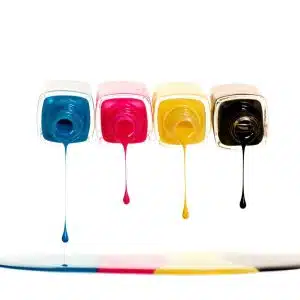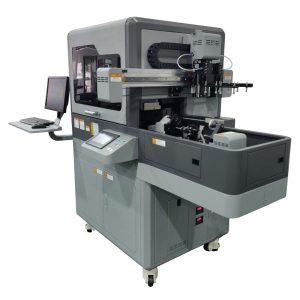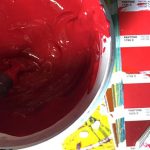How to Mix Ink
We have received questions on about the right way to mix silicone inks and inks for pad and screen printing. Since our silicone inks are used for pad and screen printing, we’ll address how to mix inks for printing in general. Our goal is to make your pad and screen printing efficient, easier, and productive. Please note, color matching and ink mixing are two different things.
Click here for the color matching calculator
If you want to achieve a quality print, you must mix your inks correctly. To avoid adhesion, viscosity, screen stability, ink pad pickup, etc problems. you have to mix the inks well. All these issues lead to lost production.
Tools you’ll needed to properly mix inks:
- Unlined mixing cups (no wax) – ink friendly cup. These help maintain integrity of the ink,
- Mixing sticks,
- Quality electronic scale with an accuracy of 0.1 grams. This is important to avoid guess work. In addition, it will also increase quality and precision the color.
Click here to download Silicone inks Mixing & Printing Guide
Step by Step Ink Mixing instructions:
- Place the scale on a level surface. (Very important)
- Place the unlined mixing cup onto the scale
- Zero/ Tare / Re-Zero out the scale
- Open the ink containers and stir/ six the inks thoroughly prior to scooping or pouring the silicone ink / printing ink into the mixing container. This will ensure consistency from the start to finish of the bulk container.
- Pour the ink in to a mixing cup. We recommend 50grams or more.
- Use the correct amount of hardener/ Catalyst. Add appropriate hardener ratio; this is dictated by the ink series. For the SE Silicone ink for rubber add catalyst, 5% of the inks weight into the ink.
- Mix these two ingredients completely.
- To alter viscosity, add the reducer/ thinner at a ratio of about 1%- 25% then re-mix. Continue to add thinner until a working viscosity is achieved. Typical mixing ratios are 10% thinner to the weight of the ink. Boston Industrial Solutions recommends to always mix ink and hardener prior to adding thinners or additives. If needed, continue to add thinner by the drop in small increments until you have achieved desired viscosity/ thickness. This technique minimizes the chance of over-thinning your ink.
If you follow these simple steps it should help to improve your printing process. If you ever have any questions on how to mix ink please contact us and we’ll be glad to help you.











